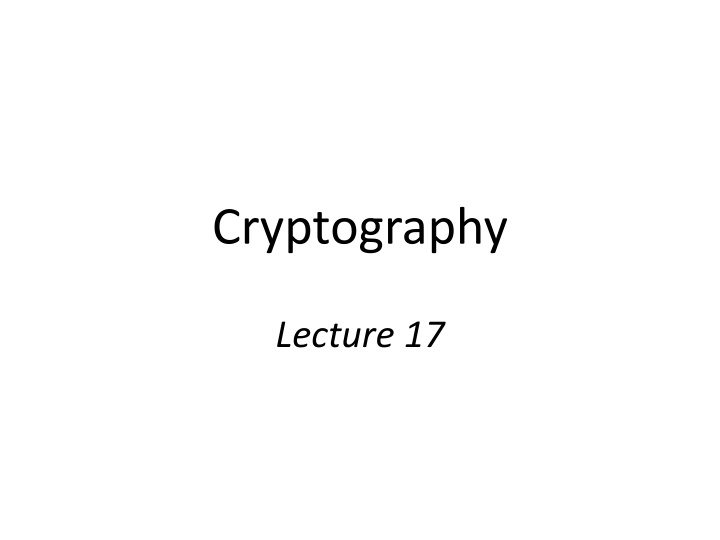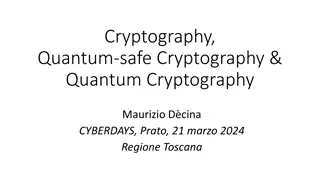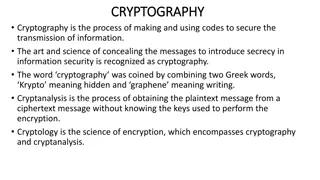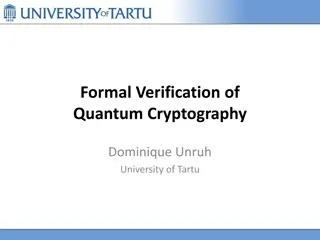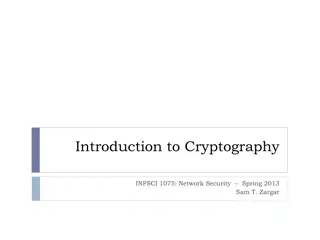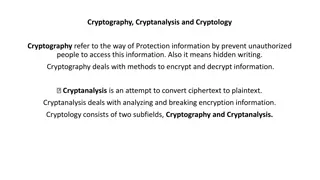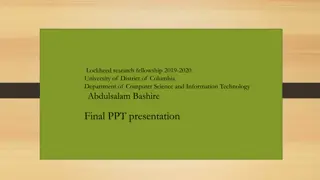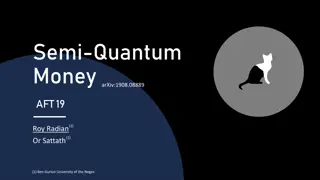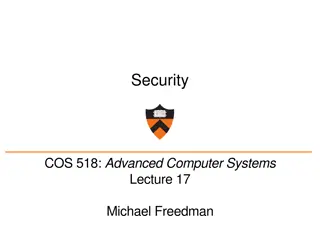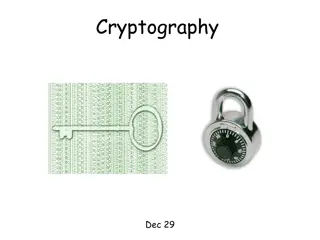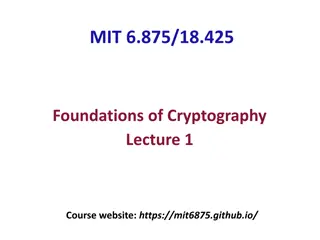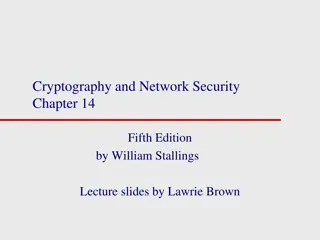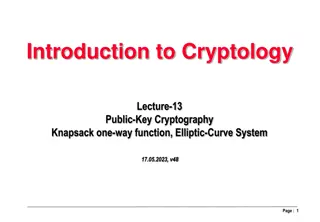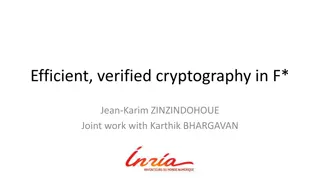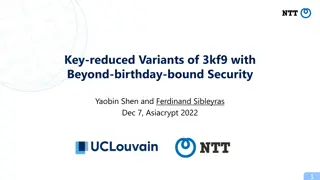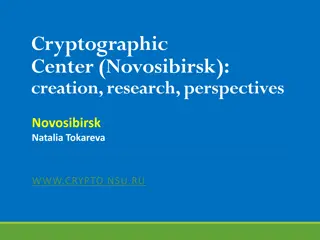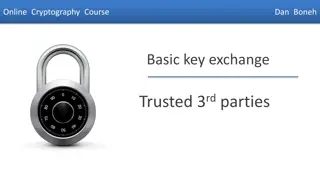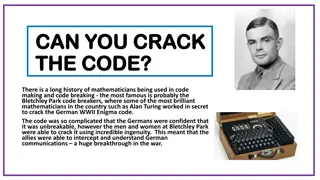Cryptography
This content provides an overview of Feistel networks and Data Encryption Standard (DES). It explains the construction of Feistel networks with invertible permutations, security aspects, and details about DES including its structure, key schedule, mangler function, S-boxes, and avalanche effect.
Download Presentation

Please find below an Image/Link to download the presentation.
The content on the website is provided AS IS for your information and personal use only. It may not be sold, licensed, or shared on other websites without obtaining consent from the author.If you encounter any issues during the download, it is possible that the publisher has removed the file from their server.
You are allowed to download the files provided on this website for personal or commercial use, subject to the condition that they are used lawfully. All files are the property of their respective owners.
The content on the website is provided AS IS for your information and personal use only. It may not be sold, licensed, or shared on other websites without obtaining consent from the author.
E N D
Presentation Transcript
Cryptography Lecture 17
Feistel networks Build (invertible) permutation from non- invertible components One round: Keyed round function f: {0,1}nx {0,1}l/2 {0,1}l/2 Fk1(L0, R0) (L1, R1) where L1 = R0; R1 = L0 fk1(R0) Always invertible!
L0 R0 fk L1 R1
L0 R0 fk L1 R1 Security of 1-round Feistel?
L0 R0 fk L1 R1 Security of 2-round Feistel? (With independent keys.)
Security? Security of 3/4-round Feistel? (When round functions are random and independent)
Data Encryption Standard (DES) Standardized in 1977 56-bit keys, 64-bit block length 16-round Feistel network Same round function ( mangler function ) in all rounds Different sub-keys in each round, each derived from the master key The round function is basically an SPN!
DES mangler function S-boxes Each S-box is 4-to-1 Changing 1 bit of input changes at least 2 bits of output Mixing permutation The 4 bits of output from any S-box affect the input to 6 S-boxes in the next round
Key schedule 56-bit master key, 48-bit subkey in each round Each subkey takes 24 bits from the left half of the master key, and 24 bits from the right half of the master key
Avalanche effect Consider 1-bit difference in left half of input After 1 round, 1-bit difference in right half S-boxes cause a 2-bit difference, implying a 3-bit difference overall after 2 rounds Mixing permutation spreads differences into different S-boxes
Security of DES DES is extremely well-designed Except for some attacks that require large amounts of plaintext, no attacks better than brute-force are known But parameters are too small!
56-bit key length A concern as soon as DES was released Brute-force search over 256 keys is possible 1997: 1000s of computers, 96 days 1998: distributed.net, 41 days 1999: Deep Crack ($250,000), 56 hours Today: 48 FPGAs, ~1 day
64-bit block length Birthday collisions relatively likely E.g., encrypt 230 ( 1 billion) records using CTR mode; chances of a collision are 260/264 = 1/16
Increasing key length? DES has a key that is too short How to fix? Design new cipher Tweak DES so that it takes a larger key Build new cipher using DES as a black box
Double encryption Let F: {0,1}n x {0,1}l {0,1}l (i.e., n=56, l=64 for DES) Define F2 : {0,1}2n x {0,1}l {0,1}l as follows: F2k1, k2(x) = Fk1(Fk2(x)) (still invertible) If best attack on F takes time 2n, can we hope that the best attack on F2 takes time 22n?
Meet-in-the-middle attack No! There is an attack taking 2ntime (And 2n memory) The attack applies any time a block cipher can be factored into 2 independent components
Triple encryption Define F3 : {0,1}3n x {0,1}l {0,1}l as follows: F3k1, k2, k3(x) = Fk1(Fk2(Fk3(x))) What is the best attack now?
Two-key triple encryption Define F3 : {0,1}2n x {0,1}l {0,1}l as follows: F3k1, k2(x) = Fk1(Fk2(Fk1(x))) Best attack takes time 22n optimal given the key length! This approach is taken by triple-DES
Advanced encryption standard (AES) Public design competition run by NIST Began in Jan 1997 15 algorithms submitted Workshops in 1998, 1999 Narrowed to 5 finalists Workshop in early 2000; winner announced in late 2000 Factors besides security taken into account
AES 128-bit block length 128-, 192-, and 256-bit key lengths Basically an SPN structure! 1-byte S-box (same for all bytes) Mixing permutation replaced by invertible linear transformation If two inputs differ in b bytes, outputs differ in 5-b bytes No attacks better than brute-force known
